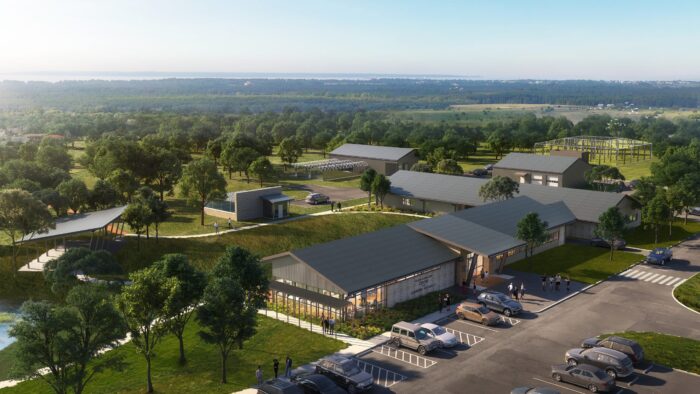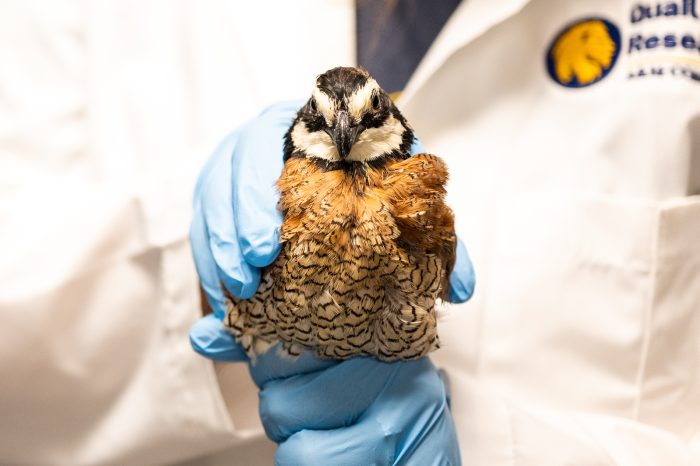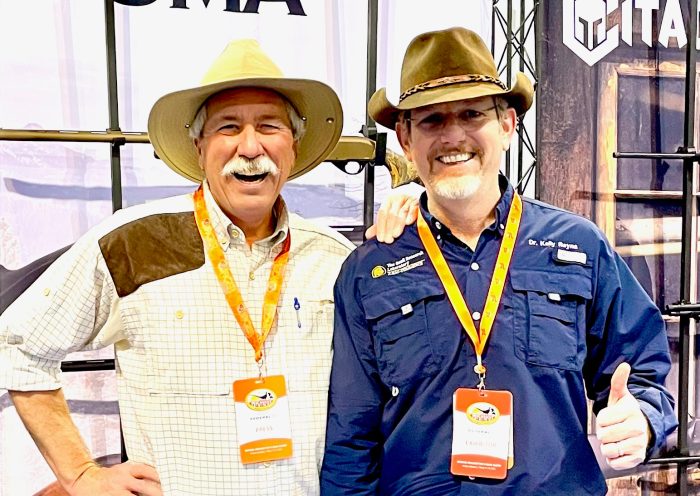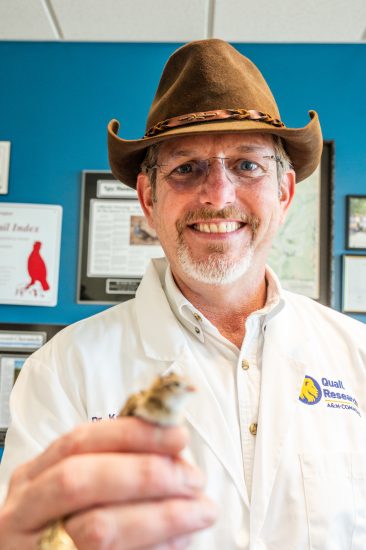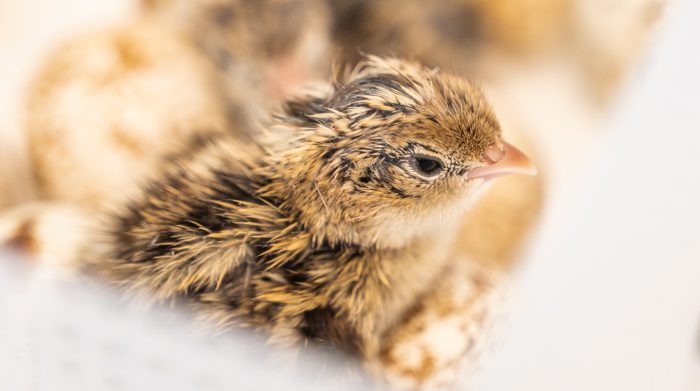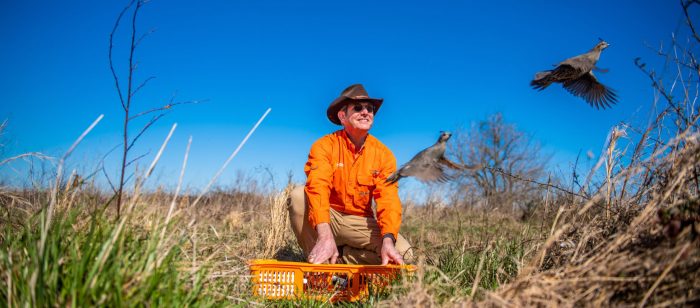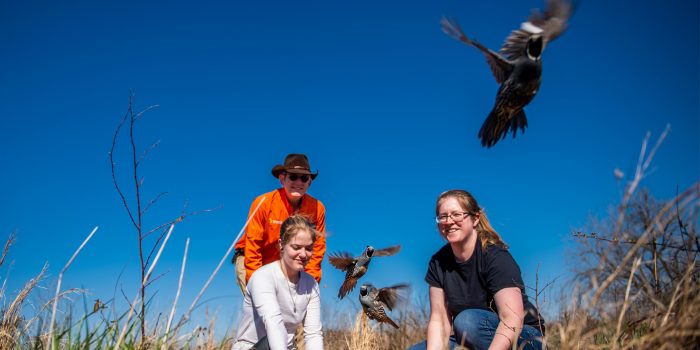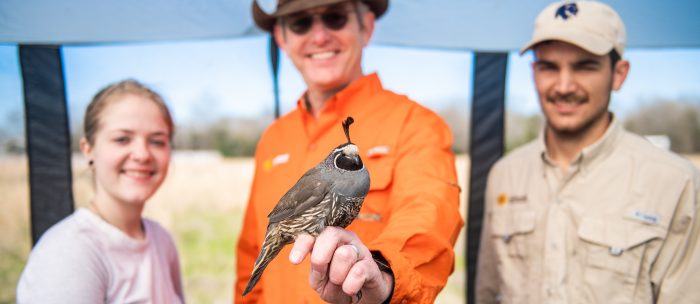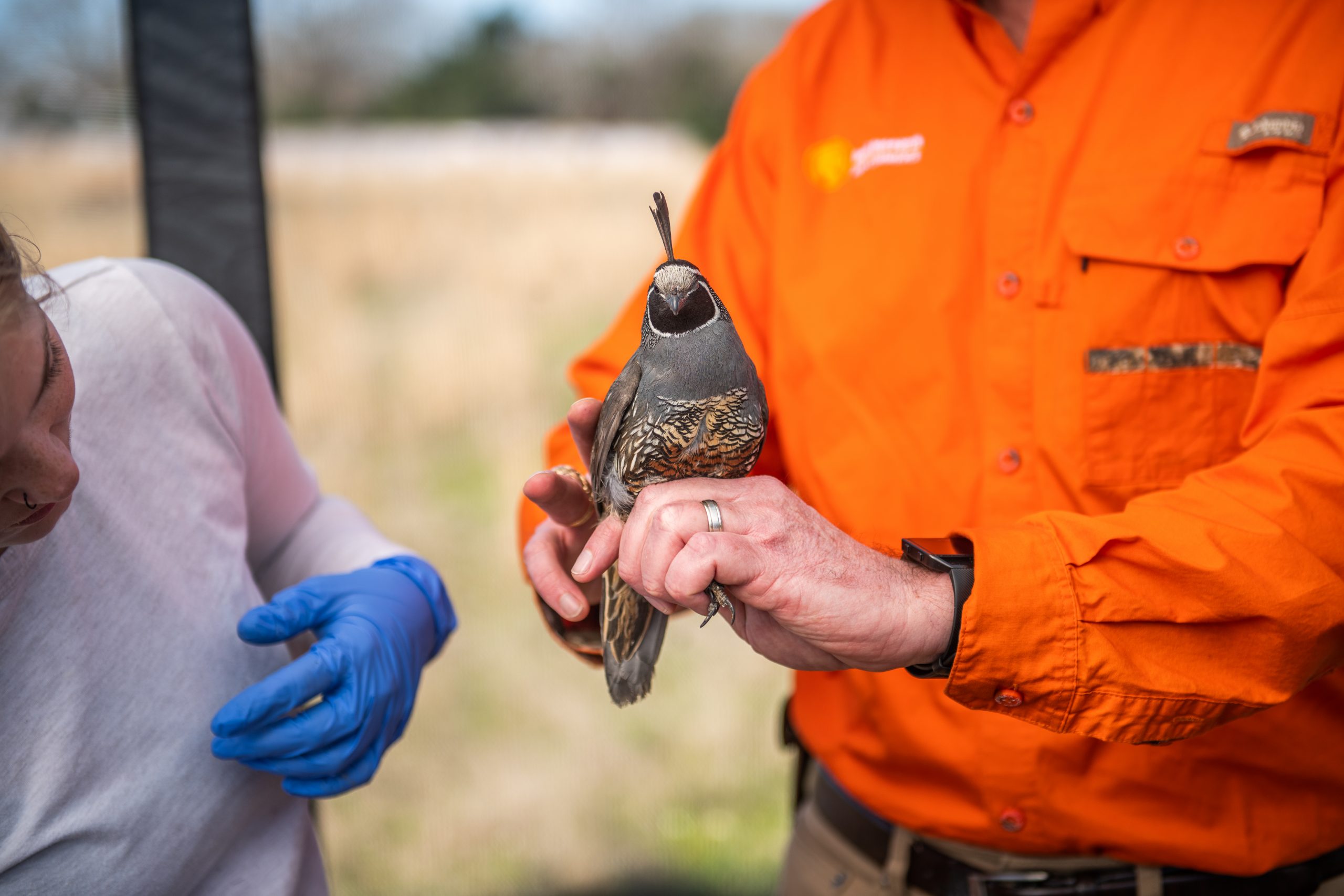
- On this page:
-
 Abstract
Abstract
-
 Publications
Publications
-
 News
News
Quail Research Station Program
Take action to preserve quail populations! Get involved in research at our established quail research stations, providing landowners with information and solutions for the sustainability of quail populations.
Our research eschews the traditional reductionist approach in favor of a large-scale systems approach that addresses the spatial scale necessary to address state and national declines in quail populations.
Abstract
The Texas Quail Research Station Program is a long-term, multi-scale research project with a goal to evaluate quail population systems and develop solutions for quail population sustainability. We are implementing five quail research stations in strategic Texas locations. Quail research stations will provide valuable information for landowners across the state and provide a reliable, non-anecdotal “early warning” system for regional quail population changes. Ultimately, we can pattern quail population systems and identify solutions for sustainability.
Featured Publications
One challenge in avian embryology is establishing a standard developmental timetable, primarily because eggs incubated for identical durations can vary in developmental progress, even within the same species. For remedy, avian development is classified into distinct stages based on the formation of critical morphological structures. Developmental stages exist for a few galliform species, but the literature lacks a description of normal stages for California Valley quail (Callipepla californica). Thus, the objective of this study was to stage and document the morphological and structural development of California valley quail. Over two laying seasons, 390 eggs were incubated at 37.8֯ C in 60% RH for ≤23 days. Eggs were opened every ≤6 hours to document embryonic development, including, blastoderm diameter, anterior angle of nostril to beak tip, and lengths of wing, tarsus, third toe, total beak, total foot, and embryo. California Valley quail embryos were staged and compared to domestic chicken (Gallus gallus domesticus), the staging standard for galliformes, as well as Japanese quail (Coturnix japonica), blue-breasted quail (Synoicus chinensis) and northern bobwhite quail (Colinus virginianus). This study produced the first description of the 43 normal stages of development for California valley quail. Compared with other galliformes, the California Valley quail has a different number of stages and displays developmental heterochrony in stages 1–24, and morphological and developmental differences in stages 25–hatch. The observed differences emphasize the importance of staging individual avian species instead of relying on poultry animal models or close relatives for developmental reference. This is extremely important in species-specific embryological studies that evaluate critical windows of development or evaluate the impacts of environmental change on avian development. This study also suggests that staging frequencies of ≤6 hours and egg transport protocols should be standardized for future staging studies.
Northern bobwhite (Colinus virginianus) populations have declined throughout the species' range since the 1960s. Habitat loss and degradation are thought to have largely contributed to this decline by reducing the amount of space and resources required to sustain viable quail populations. Previous studies have attempted to address this issue by focusing on ranch-level management of bobwhites instead of on the effectiveness of large-scale techniques. Here, we review current and historical studies that have facilitated the implementation of management techniques on multiple scales. In doing so, we will also reveal the shortcomings of such studies by highlighting their narrowed focus on small-scale management and research, and reiterate the need for large-scale studies.
The northern bobwhite (Colinus virginianus; hereafter, bobwhite) population decline has prompted several studies investigating bobwhite population genetics and overall connectivity over the past decade. The zeitgeist of current quail conservation is that bobwhite populations have become increasingly fragmented, leading to their decline due to reduced fitness associated with the effects of small population size. A few studies exploring population-level patterns of genetic connectivity at the local scale have identified some areas possessing limited gene flow likely due to recent anthropogenic landscape changes. Interestingly, multiple studies using genetic methods have also suggested that the species has experienced a recent range-wide expansion with few barriers to dispersal, indicating a large panmictic population. Although the above are both supported by empirical data, we highlight another possibility that has been proposed yet rarely investigated. Millions of wild bobwhites have been transported among populations, and millions more captive-reared bobwhites have been and continue to be released across the species' range. Given the massive scale at which bobwhites have been artificially dispersed, more research is needed to investigate the effects of introgression of nonlocal birds on our ability to understand recent changes in bobwhite population fragmentation, size, and diversity. Such information has important management implications for long-term bobwhite population sustainability. By quantifying the level of human-mediated bobwhite dispersal events, our review cautions against assigning evolutionary or conservation significance to patterns of genetic connectivity among bobwhite populations until a more systematic effort is made to verify that such activities have not affected our ability to identify natural gene-flow patterns at both local and broad-scale distributions. © 2017 The Wildlife Society.
Multiple studies have attempted to model northern bobwhite (Colinus virginianus) distribution using classified remotely sensed imagery in combination with pattern recognition software. These models tend to be more accurate in humid subtropical regions. To identify bobwhite habitat in subhumid and semiarid rangeland, we performed our own classification on 4 LANDSAT scenes of Clay County, Texas, from July and December 2015. Stands of mature little bluestem (Schizachyrium scoparium) provide excellent bobwhite nesting cover and could be identified using LANDSAT imagery. Habitat was scored from 0 to 1.0 based on estimated range health, presence of little bluestem, and presence of brushy cover. We compared habitat scores with the results of breeding season call counts from 2014 and 2015 and found a significant correlation. When used in combination with other landscape data, this approach can provide a regional context to inform conservation and management decisions.
The annual abundance of northern bobwhites (Colinus virginianus) fluctuates drastically in semi-arid environments (e.g., Texas), which complicates the ability of wildlife biologists and quail managers to predict annual bobwhite productivity and relative abundance for the ensuing hunting season. The Texas Quail Index (TQI) was a 5-year citizen science project that evaluated several indices as predictors of bobwhite productivity and abundance during the subsequent fall. Indices included spring cock-call counts, forb species richness, simulated nest fate, potential nest-site density, scent station visitation rates, roadside counts, fall covey call counts, and harvest data. Spring cock-call counts explained only 41% of the variation in fall bobwhite abundance across all study sites in years 1–4; yet explained 89% of the variation in year 5. The percentage of juveniles in the fall population (an index of bobwhite productivity) was significantly lower in year 5. All study sites experienced drought conditions throughout year 5 based on the Palmer Drought Severity Index (PDSI). Thus, drought conditions in semi-arid environments result in reduced productivity compared to non-drought years. Our results suggest low recruitment during drought years makes fall bobwhite abundance more predictable than during non-drought years. Wildlife biologists and quail managers should have a better ability to predict bobwhite productivity and fall abundance in drought years by recording spring cock-call counts.


